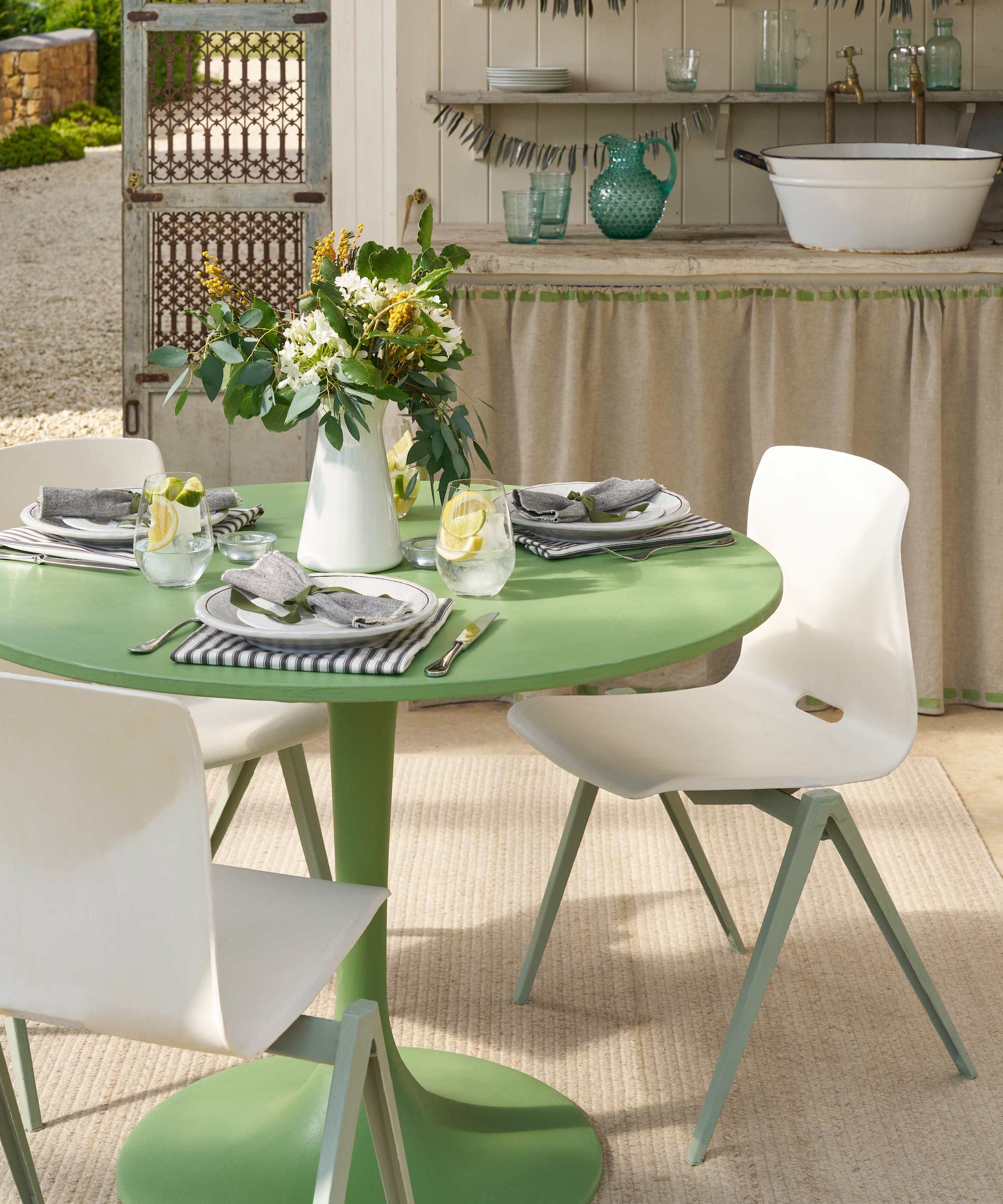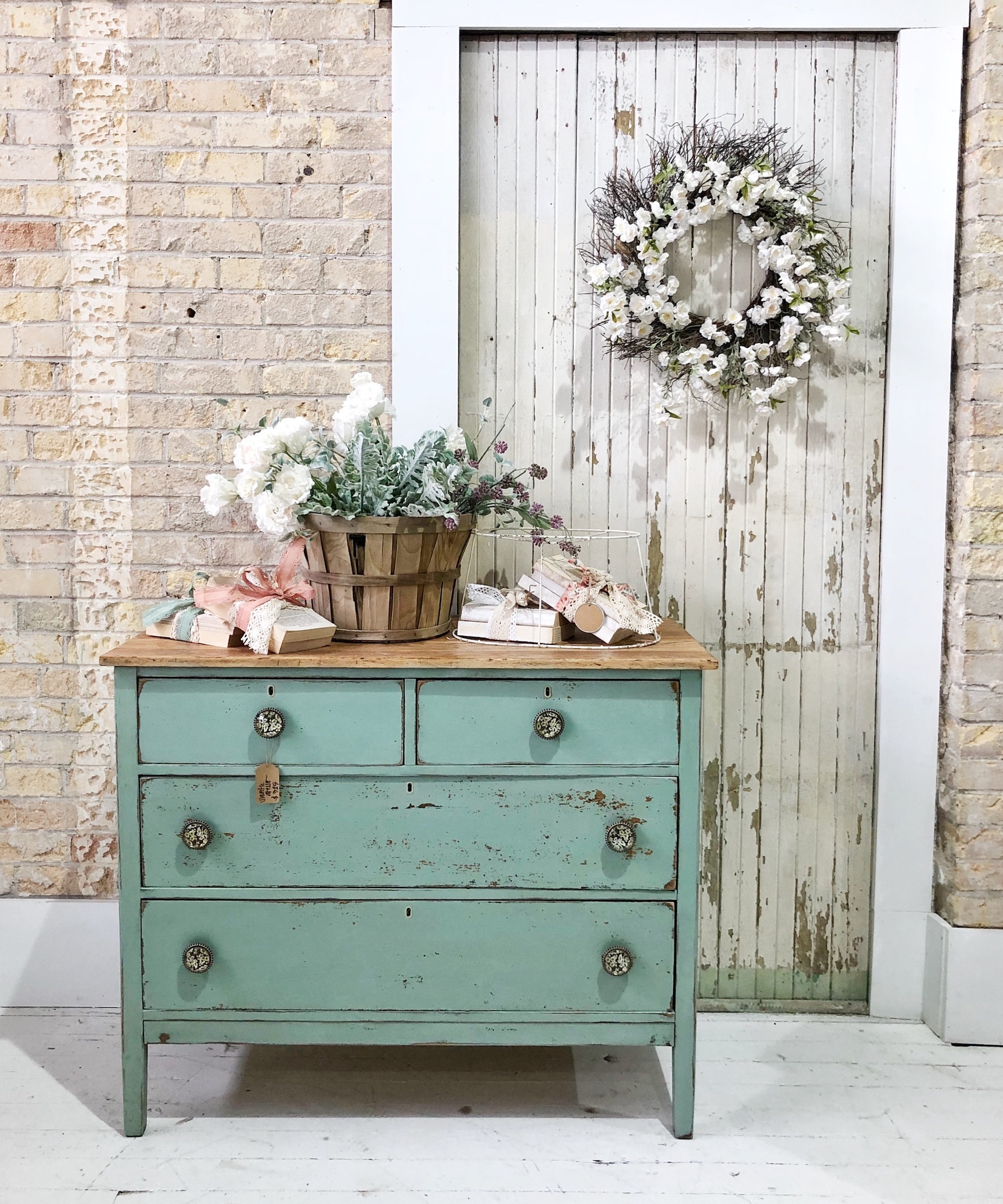
Buying new isn’t always the answer for interiors. There’s little to beat the satisfaction of an update to what’s already there — or to a piece you bought secondhand — that makes it a fabulous feature for a home. But if you want to transform color and finish, understanding the characteristics of chalk paint vs milk paint is important.
While both create a matte finish, a head-to-head of the paint finishes reveals that milk paint is the winner if you want a finish made with natural ingredients that creates a look redolent of original Shaker furniture. That said, chalk paint triumphs if pre-mixed paint and the ability to create a range of finishes are more your priorities, though. For most Livingetc readers, we'd say chalk paint is going to be your best bet.
But there are further differences between the two to appreciate, as well as factors that might distinguish one as preferable for a particular project. Below, we’re sharing the details that will allow you to choose the best: chalk paint vs milk paint.
When to Use Chalk Paint

Before we talk about when to use it, let's have a reminder of what chalk paint is. Although much imitated with online recipes suggesting how to make chalk paint, the real deal is Annie Sloan’s trademarked Chalk Paint.
“When I painted my first piece of furniture back in the mid 1970s, I used artists’ acrylic paints because there were no decorative furniture paints on the market,” Annie explains. “However, acrylic paint took a long time to dry and didn’t give me the soft matte finish I wanted; it was also very expensive for bigger pieces of furniture.
“I began experimenting with making my own paint at home and it occurred to me if I found this easy to use, quick to dry, paints-on-anything paint so useful — because I could paint in the morning, have it dried and waxed by the afternoon and pick the boys up from school — then perhaps other people would, too. That’s how I invented Chalk Paint in 1990.”
Chalk paint can create a smooth finish for a modern look, or be applied more thickly to give a piece a textured, more rustic appearance. Although first designed as a furniture paint, you might be surprised at the range of occasions when it can be an option. They include:
- Transforming furniture is the number one use for chalk paint. It can be used on a variety of materials used to make furniture — wood, metal, and melamine.
- In the kitchen, cabinets can also be given a whole new lease of life with the paint. Think hardware, too, as it can also be used on brass and metal fixtures and fittings in the kitchen, or elsewhere.
- Bringing modern style to a fireplace in marble, stone, wood, or brick is also possible and, if you don’t have one of these, it could be used on radiators instead.
- It’s also feasible to use chalk paint on upholstery with the best results given when applying it to small firmly upholstered items — for instance a dining chair seat — in natural fabrics like cotton or linen. It can also be applied to leather and vinyl.
- The paint can also be applied to walls to create an appealing texture and matte finish, although using it in kitchens, bathrooms, and where a scrubbable finish is required is not recommended.
- Try it for floor paint ideas, too. It can be applied to wooden or concrete surfaces.
- Consider its use outside as well for garden furniture, wooden fences, sheds, and walls.
The Disadvantages of Chalk Paint
Chalk paint creates a beautiful finish, but there are a few things you need to be aware of if you opt for it.
While chalk paint doesn’t typically require you to sand or prime furniture first, it does need to be sealed and protected from marks. In other words, using it is, at least, a two stage process, depending on whether you need to apply one or two coats of paint.
The process is also lengthened if you need to paint over wood that‘s been oiled or stained when preparation is necessary to avoid discoloration. In this case, sealing in the stain is necessary first.
There are also just a few materials on which the paint shouldn’t be used: teak and other oily woods and silicone.
It's worth noting, too, that some find it tricky to avoid brush marks when using chalk paint, and also find it a challenge to create an even finish because it is a thick paint. But diluting the paint a little and applying thin coats can help.
When to Use Milk Paint

Again, a quick reminder of what milk paint is before we talk about how to use it. A coating with a long history, milk paint is made with milk protein (casein) and lime, plus earth or mineral pigments.
Authentic milk paint uses the same ingredients today but arrives as a powder which is mixed with water for application. Be aware that there are some brands that use alternative ingredients with casein, and synthetic additives, so always check the ingredients lists if you want traditional milk paint for a project.
Milk paint is excellent if you want to create the period color and finish of antique pieces, specifically Early American and Colonial designs. It has a flat, chalky finish.
As for what you can apply milk paint to, these are projects you could undertake:
- Milk paint is most often used for wooden furniture. It can be hand distressed if desired.
- In the kitchen, it can be used on wooden kitchen cabinets to revamp the room.
- It can be used to transform other materials. “Original formula milk paint can be used on any porous surface, such as wood, plaster or stone,” explains Carolyn Moore, managing director of Old Fashioned Milk Paint UK. If you do choose to apply it on new plaster, bear in mind that because of the surface’s porosity it’s better for a thin wash effect.
The Disadvantages of Milk Paint
Milk paint has a whole host of qualities, but there are limitations to keep in mind when deciding whether to use it, too.
You may need to remove a previous finish before applying milk paint as the surface should be porous. As noted above, you’ll also need to prepare the paint by mixing the powder with water.
Milk paint should be sealed, adding another step after application. “We always recommend sealing with a top coat of varnish, wax, or oil to protect it from moisture and grease, which would easily absorb into unsealed milk paint,” says Carolyn. “Any finish will work over milk paint, it really depends on the desired look (as well as whether a matte finish or a sheen is preferred) and the durability required.”
The paint doesn’t work as well on non-porous surfaces, although adhesion-promoting bond is available to allow its application to them. There is also a version of milk paint designed for non-porous surfaces such as old paint or varnish or metal or plastic.
So, our verdict: chalk paint vs milk paint — which is best?
Chalk paint comes out top if time is of the essence as there are typically fewer stages, and if you want to be able to create different finishes, including a smooth modern look. But for vintage style (and natural paint ingredients), milk paint is the top pick.
Planning a furniture painting project? Check out our guide on how to paint a dining table for the best tips and tricks to keep in mind.







